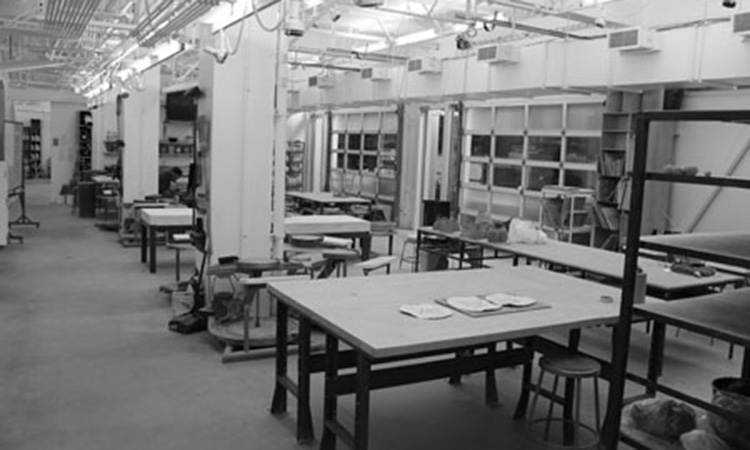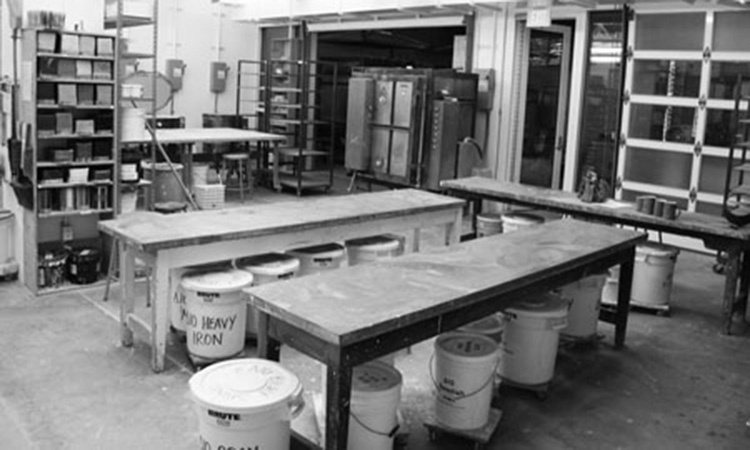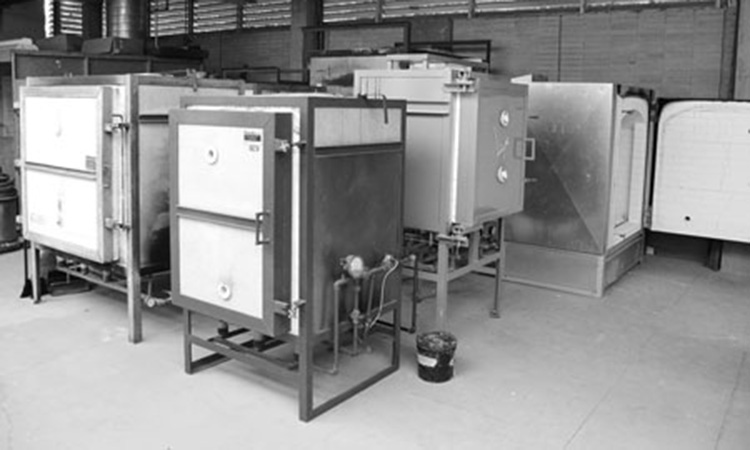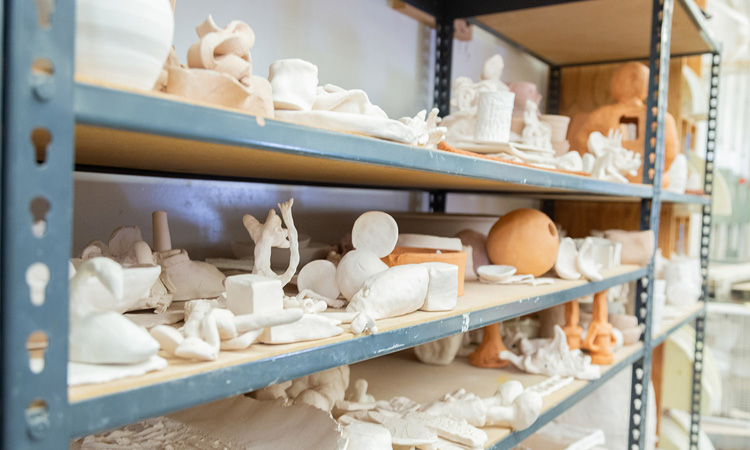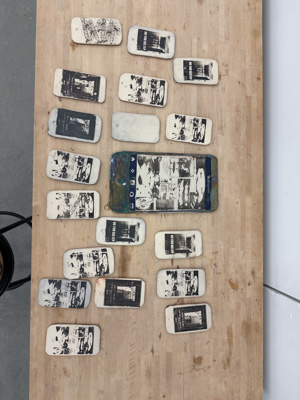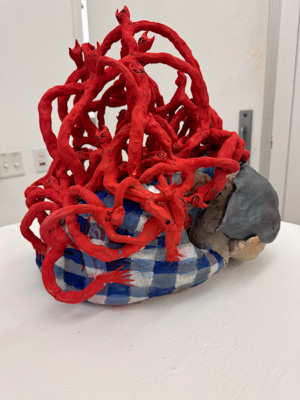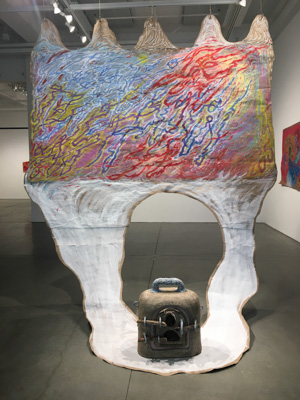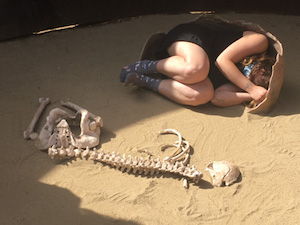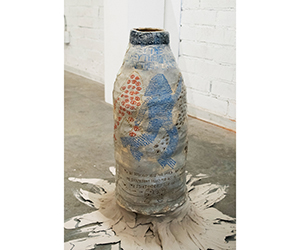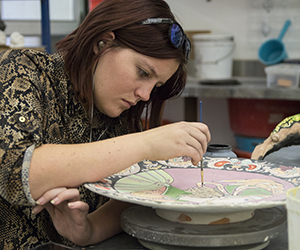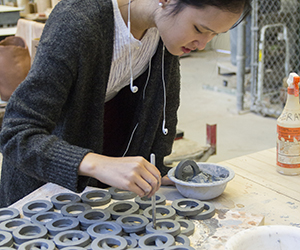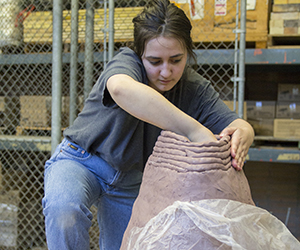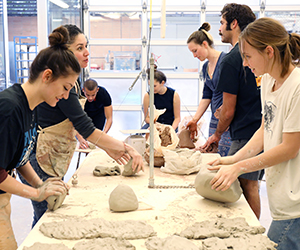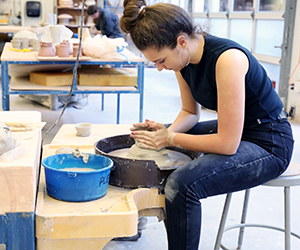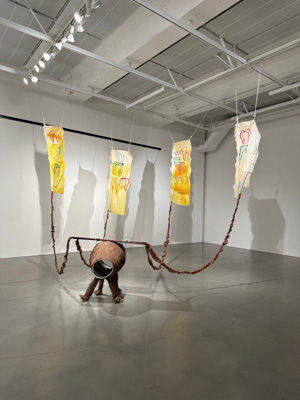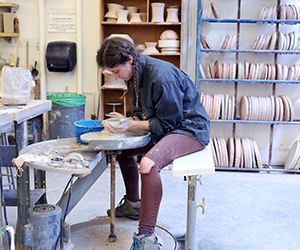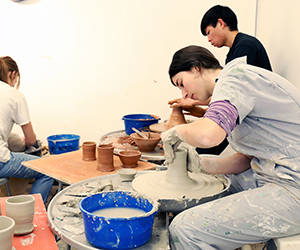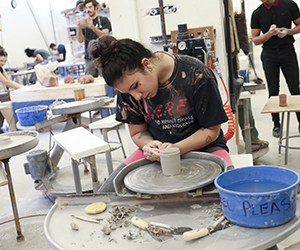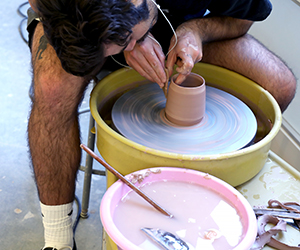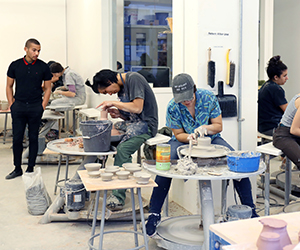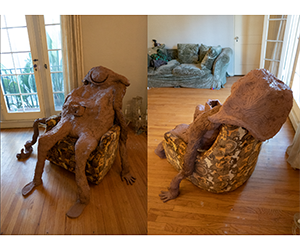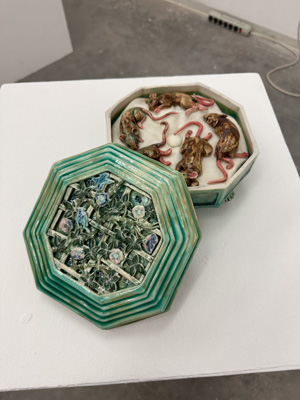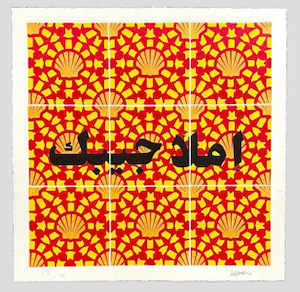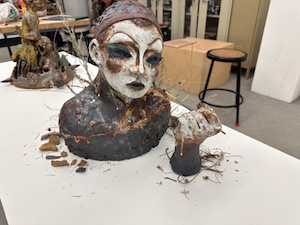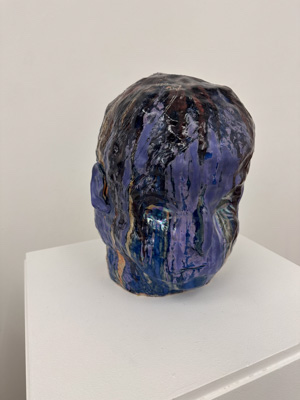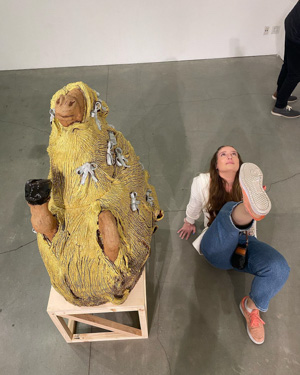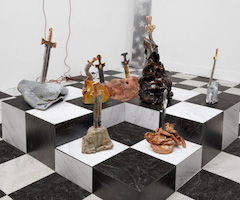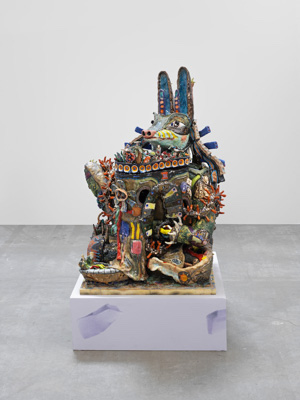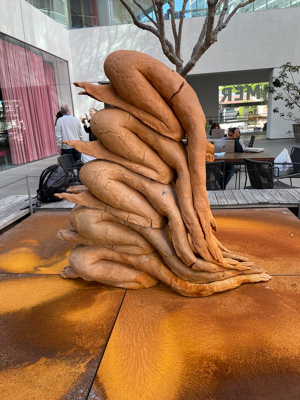Ceramics Faculty
Associate Professor
Candice Lin
Professor and Ceramics Area Head
Anna Sew Hoy
{professional_title}
{email}
{bio}
Lecturer
Laub
Lecturer
Kristen Morgin
{professional_title}
{email}
{bio}
Ceramics Lab Supervisor
Shoshi Watanabe
{professional_title}
{email}
{bio}
Location & Contact Information
Ceramics Area Location
The Ceramics Area is located on the first floor of the Broad Art Center, Suite 1275
Ceramics AV / Clean Room - Room 1275A
Ceramics Glaze Room - Room 1275F
Ceramics Lab Supervisor
Shoshi Watanabe
T: (310) 825-8235
Office: Broad Art Center Suite 1275C
Lab Hours
Regular Hours will shift quarterly based on class schedule.
Please check the lab front door for current hours.
Instructional Materials Fee
All students must pay an instructional materials fee each quarter they are enrolled in Ceramics classes. As of July 2024, the fee is $110 and payable to UC Regents. The fee supports access to mixed glazes, dry clay and glaze materials, firings and lab equipment and tools. Mixed clay from Laguna Clay is available in the studio for $13 per 25-pound bag. Other materials and supplies, such as epoxy glue and dust masks, are also available for purchase.
| Product/Service | Unit Measure | Rate |
|---|---|---|
| Lab Use Fee | Per Quarter | $110.00 |
| 25lb Clay* | Per Unit | $13.00 |
| Foto Decal Print, A3* | Per Sheet | $14.00 |
| Foto Decal Print, A4* | Per Sheet | $13.00 |
| Rosetta Decal Print, A4* | Per Sheet | $6.00 |
*denoted items are subject to price change based on current market price
Ceramics Undergraduate & Graduate Courses
Undergraduate Ceramics Courses
Art 11E. Ceramics
Units: 4
Studio, eight hours; five hours arranged. Introduction to ceramic materials and processes, with emphasis on personal and cultural expression in ceramic media. Discussion of ceramics in contemporary artistic practice and social history of ceramic art. Letter grading.
Art 148. Advanced Ceramics
Units: 5
Studio, eight hours; seven hours arranged. Requisite: course 11E. Selected studies in ceramics, with emphasis on individualized creative experimentation with materials and techniques introduced in course. Methods and processes to be selected from range of possibilities, including handforming and modeling, preparation and use of molds, slipcasting, and use of potter’s wheel. May be repeated for maximum of 20 units. Letter grading.
Art 148A. Advanced Ceramics: Topics in Anti-Racism, Equity, Diversity, and Inclusion
Units: 5
Studio, eight hours; seven hours arranged. Requisite: course 11E. Varied approaches to clay media and content to develop students' technical, expressive, and conceptual tools to understand and explore anti-racism, equity, diversity, and inclusion. Combination of courses 148 and 148A may be repeated for maximum of 20 units. Letter grading.
Art 197. Individual Studies in Art
Units: 2 to 4
Tutorial, to be arranged. Preparation: 3.0 grade-point average in major. Corequisite: course 190. Limited to junior/senior art majors. Individual intensive studio project or independent study, with scheduled meetings to be arranged between faculty member and student. Tangible evidence of project or mastery of subject matter required. May be repeated for maximum of 8 units. Individual contract required. Letter grading.
Art 198. Honors Research in Art
Units: 2 to 4
Tutorial, to be arranged. Preparation: 3.0 grade-point average overall, 3.5 grade-point average in major. Corequisite: course 190. Limited to junior/senior art majors. Development and completion of comprehensive research or studio project under direct supervision of faculty member. May be repeated for maximum of 8 units. Individual contract required. Letter grading.
Recent Student Work
Graduate Studies
Ceramics is one of six areas of study offered in the M.F.A. Art program. The Ceramics Area supports art practices in which material experimentation with clay propels critical thinking and work across disciplines. Graduate students have the opportunity to define their position in the world through their encounters with clay during this three-year course of study. They are challenged to originate expanded definitions of ceramics and mixed media, including clay-based elements in performance, video and installation. Our mission is to expand the collaborative nature of ceramics towards a practice of social justice.
Ceramics Area Head Anna Sew Hoy serves as the primary adviser to students admitted to this area of study. Students also may work with faculty across other areas within the Department of Art and other departments across the university.
All M.F.A. students are offered the use of individual studios off-campus in the UCLA Margo Leavin Graduate Art Studios, located in Culver City. In addition to individual studio spaces, the studio building houses photography, sculpture, ceramics, and computer labs, as well as open spaces for exhibitions, lectures, and group critiques. Although the Department of Art does not offer graduate level courses in the summer, the graduate studios are open year-round.
Yummy Bowl Benefit:
Since 2022, the Ceramics Area has held an annual Yummy Bowl Benefit to raise funds for the UCLA CPO Food Closet which operates as a fully-stocked pantry with fresh produce, beverages, bread, canned foods, and hygiene products for any UCLA student experiencing food insecurity. Concerned that over 40% of our students reported being food insecure, the Ceramics area in the Department of Art, School of the Arts and Architecture, initiated this fundraiser to support our community during this especially attenuated time of need. Our Yummy Bowl Benefit is a fundraiser where students, staff, and faculty make bowls which are sold for $20/bowl, filled with a yummy dish. Our inaugural benefit served a delicious dish made by Lulu, a local restaurant run by renown Chez Panisse chefs David Tanis and Alice Waters. 100% of the funds raised go to the CPO Food Closet to highlight and amplify their good work and to bring attention to this pressing issue of food insecurity in our UCLA community.
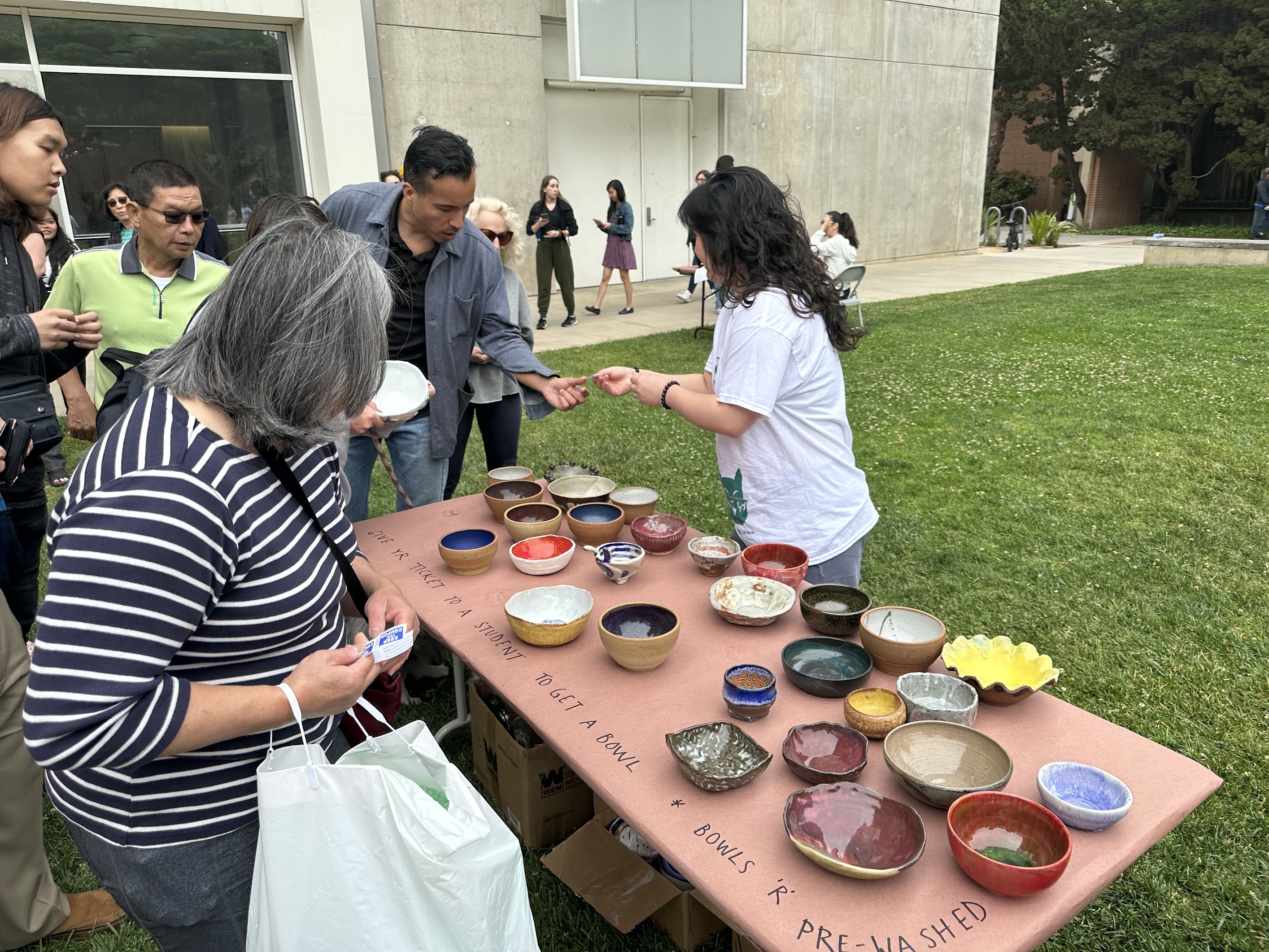
Graduate Ceramics Courses
Art 277. Graduate Ceramics
Units: 2 to 8
Studio, eight hours. Studies in ceramics and art with investigation of traditional and experimental processes and intellectual approaches to art practice utilizing ceramic media. Emphasis on development of significant body of original work reflecting student’s expressive and theoretical concerns. May be repeated for credit. Letter grading.
Art 276. Graduate Group Critique
Units: 4
Discussion, four hours; tutorial, to be arranged. Group critique/discussion of students' research. Additional tutorial meetings by arrangement with instructor. May be repeated for credit. Letter grading.
Art C280. Graduate Seminar
Units: 4
Seminar, three hours. Advanced topics in critical theory and study of contemporary art, with emphasis on individuals, issues, and methodologies. Possible areas of study include structuralism, deconstruction, feminist and psychoanalytic theory, commodification, and censorship. May be repeated for credit. Concurrently scheduled with course C180. Letter grading.
Art 284. Technical Studio
Units: 2 to 4
Studio, three hours; outside study, three to nine hours. Limited to Art M.F.A. students. Selected topics in techniques related to advanced studio projects. May be repeated for credit. Letter grading.
